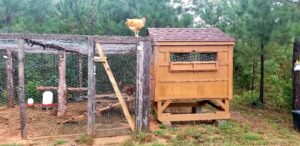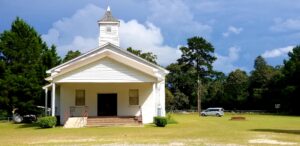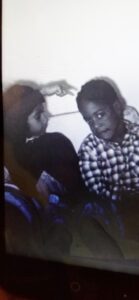MEET ARIANA
An Unforgettable Connection to my Ancestors
Part 2.
In Part 1 of “My Journey through the American South” I shared how my desire to visit the places of my family elders was inspired by the stories they shared with me about their childhood. They retold the stories passed down to them from our ancestors. All of these stories collectively sent me on a journey that was a pilgrimage of sorts. Traversing seventeen States from my home State of New Jersey, the first leg of our trip became more historic, eventually taking us to Africatown in Mobile, Alabama. While visiting Africatown we were hit with the grim reminder that the lives of Africans and their descendants in the diaspora were considered worthless during the transatlantic slave trade and afterwards. And yet, through it all, we still stand.
Once again, we resumed our road trip and headed to Atlanta, Georgia, where we spent two and a half days visiting family from both my maternal and paternal side. My father’s baby sister and her husband had flown in from Huntsville, Alabama, to join us in Atlanta to meet a newly discovered and close relative. We’d discovered each other through a DNA testing site. It was quite amazing to me that a cousin I had never met before could sound and look like family she had never met before. What we inherit through genetics is nothing short of a miracle. It could be a smile inherited from a Granny, or a gait inherited from a Great-grandpa, a nose inherited from a doting father, even the peculiar way an Old Auntie held a coffee cup can somehow be inherited by a family member she’s never met. Those are the things, the little idiosyncrasies that held my gaze, keeping my eyes glued to my new cousin. Her mannerisms betrayed her lineage and she didn’t even know it. Her DNA had merely served as a scientific confirmation to me of what by nature can be shared amongst family whether they grow up together or not.
Somehow, the state of Georgia had successfully managed to become the new home for some of my mother’s paternal family from New Jersey. It just so happened that, while we were visiting, some of my family who still live in New Jersey also came to visit the transplanted family in Atlanta. And our time together was a mini family reunion, even if it was just for an evening. As we laughed, ate, and enjoyed each other’s company, I could hear my late great grandmother Gladys’ voice resonating in the voices of her youngest daughter, granddaughters (including my mother), and her great granddaughter. It was all so surreal.
The next day we found an almost literal hole-in-the-wall breakfast spot that served Southern Hoe Cakes. I hadn’t had Hoe Cakes since my childhood when I would visit my paternal grandparents. Southern Hoe Cakes are these simple pancakes made with cornmeal, sugar, salt, buttermilk, eggs, water, butter, and bacon drippings. Once combined into a batter, you ladle them onto a hot griddle or a cast iron skillet to fry in bacon grease. And magically they become delicious cakes with crispy edges. Each bite for me was pure nostalgia. I felt transported to my grandparents’ old kitchen, the cast iron cookware sitting atop of the stove, the blue jar of Crisco oil with its red and white lettering sitting on the countertop, while the smell of bacon filled the air. I asked to speak to the owner inquiring about why he offered Hoe Cakes on his menu. He too spoke of the nostalgia of his childhood. We also briefly discussed the complicated history of the Hoe Cakes made from ingredients of cornmeal, water and salt that was given to the enslaved. They would then turn it into corn mush and baked on the flat of a hoe over a wood fire in the field. Ironically, Hoe Cakes were the favorite breakfast meal of George Washington. He made his slaves cook it for him to which they would of necessity doctor it up with other ingredients. Even still, it’s quite interesting how food has a way of connecting us to the past, whether good or bad.
From there we went to visit my mother’s favorite cousin. Watching them together was like watching two little kids who had simply picked up where they’d left off. They laughed and swapped stories about their parents who were siblings and of their grandparents. Old photos were brought out, and as fast as they were brought out I had scanned them with my phone. What I realized when we left Alabama and Georgia was saying goodbye can be one of the hardest things to do. I’ve since learned to appreciate phone calls, texts and emails, along with social media platforms to stay in touch with my extended family.
We then headed to South Carolina, where we spent another two days with my mother’s recently discovered sister, thanks to a DNA testing site, and her husband. In those two days, my new uncle taught me how to shoot a rifle at old jars and rusty cans. At the crack of dawn, he would rise each morning to make a new road with nothing more than dirt, a shovel, and a wheel barrel.  I woke up each morning to the crowing of their rooster, ate freshly laid eggs that I picked from their henhouse, and burned the trash in a compost heap in the backyard. As a city dweller from New Jersey, the South was turning out to be quite an adventure. It didn’t take long before I started not to miss the hustle and bustle of the North East. But after two eventful days in South Carolina, we needed to make our way back home, traveling through the states of North Carolina, Virginia, Washington DC, Maryland, Delaware, and finally back to New Jersey.
I woke up each morning to the crowing of their rooster, ate freshly laid eggs that I picked from their henhouse, and burned the trash in a compost heap in the backyard. As a city dweller from New Jersey, the South was turning out to be quite an adventure. It didn’t take long before I started not to miss the hustle and bustle of the North East. But after two eventful days in South Carolina, we needed to make our way back home, traveling through the states of North Carolina, Virginia, Washington DC, Maryland, Delaware, and finally back to New Jersey.
Once back home, I began to reflect upon my journey through the American South. Today, each leg of our journey holds a special meaning for me. My enslaved paternal ancestors had made a similar journey, however, for different reasons and not by choice. Their journey was from the Carolinas to Tennessee, then to Mississippi, then to Alabama, and some eventually from Alabama to Georgia and Florida. Still, others went in a southwestern direction from the Carolinas to Louisiana and Texas. Their migration was forced. I’ve traced them being sold from one enslaving family to another, then to another, and yet still another. Some were given as wedding gifts and as an inheritance to the enslavers’ children. And although my journey through the American South with my parents was in an SUV, my ancestors were most likely marched on foot. Their journey, if they traveled straight down to Alabama, would have taken them months to travel.
“Alabama fever” is what the slaveholders called it, desiring to occupy the lands unwillingly left vacant by the “Indian removal” and those Indigenous Americans’ Trail of Tears. My ancestors were a part of the United States of America’s most massive forced migration from the old colonial South to the cotton and sugar plantations of the Deep South – the domestic slave trade, also called by some the “second Middle Passage.” The new territory and the burgeoning agricultural economy increased the demand for the free and cheap slave labor force of enslaved African Americans. Documented are the stories from some of those enslaved individuals forced to make the trek. They were repeatedly raped in front of their loved ones, beaten, and sold along the way, making that journey their own trail of tears. Although my experiences on the journey differed drastically from my enslaved ancestors, I knew I had to make the trip.
Even still, what connected me, in a manner of speaking, to my ancestors was seeing their marked graves behind the Second Mount Zion Missionary Baptist Church in Owassa, Alabama. Most of their old homes are no longer standing,
Most of their old homes are no longer standing, but yet their headstones tell a story. Just like the languages and customs of Africatown’s original African settlers may have disappeared, having seen their headstones also told something of their story as well. I read aloud the names of my ancestors, the dates they were born, and when they had died. Some even had epitaphs. And their collective narrative spoke to me in my own voice, declaring, “Although dead, we were once alive. We endured slavery and Jim Crow. We didn’t just survive, but we fought so you could have a better life! Their simple and crude headstones revealed to me the undeniable connection I share with my ancestors – I too must live in a way that the future generations of my family can also have a better life.
but yet their headstones tell a story. Just like the languages and customs of Africatown’s original African settlers may have disappeared, having seen their headstones also told something of their story as well. I read aloud the names of my ancestors, the dates they were born, and when they had died. Some even had epitaphs. And their collective narrative spoke to me in my own voice, declaring, “Although dead, we were once alive. We endured slavery and Jim Crow. We didn’t just survive, but we fought so you could have a better life! Their simple and crude headstones revealed to me the undeniable connection I share with my ancestors – I too must live in a way that the future generations of my family can also have a better life.
“A cemetery is a history of people – a perpetual record of yesterday and sanctuary of peace and quiet today. A cemetery exists because every life is worth loving & remembering–always.” –Unknown






